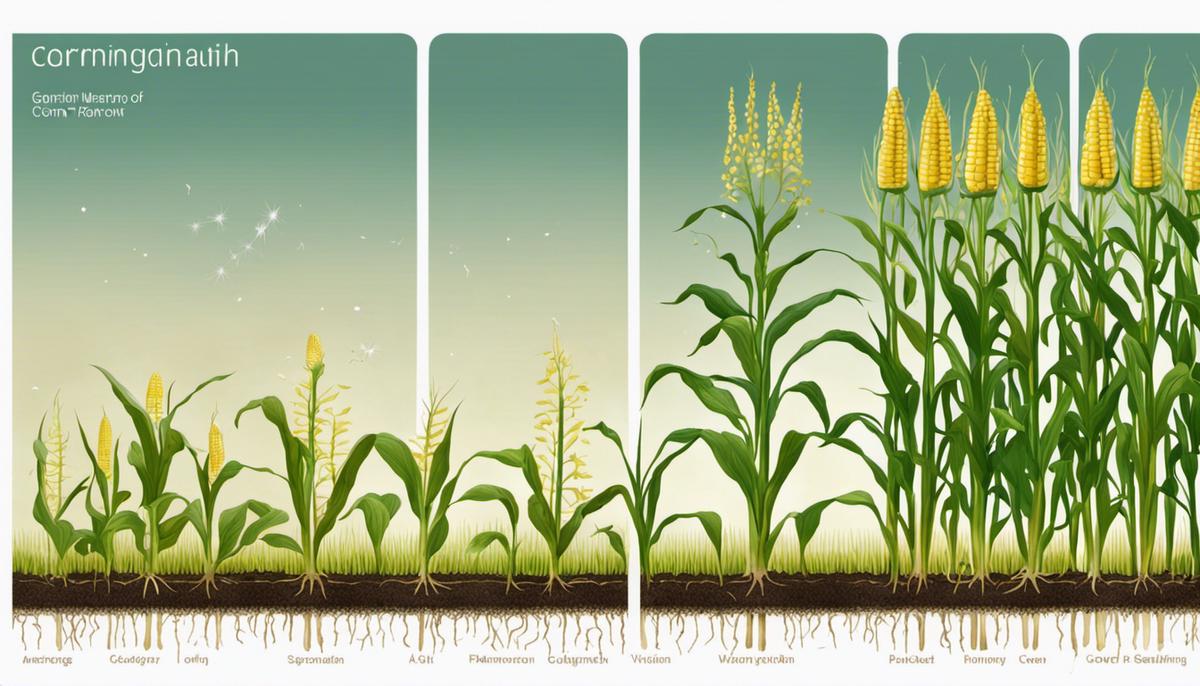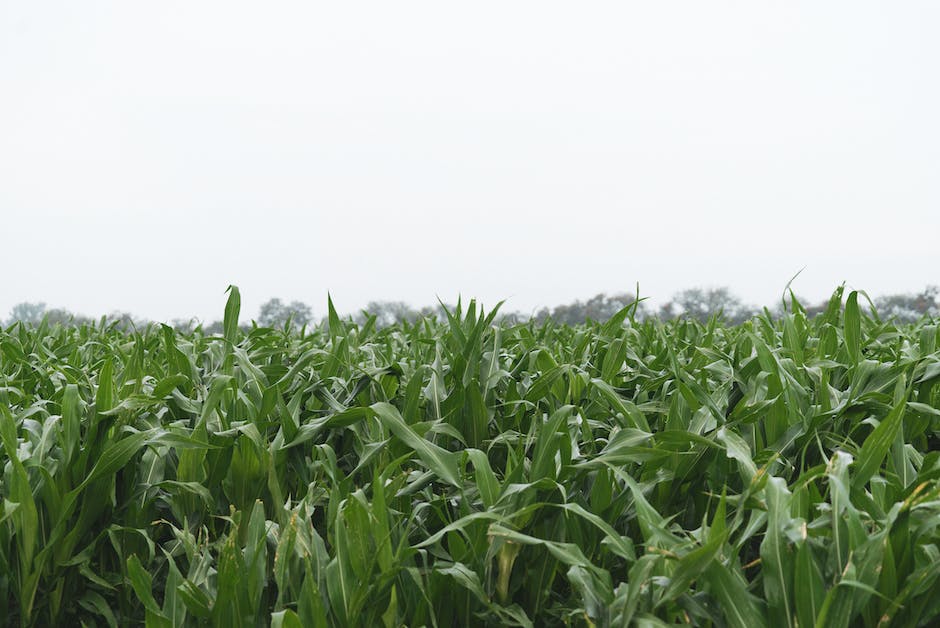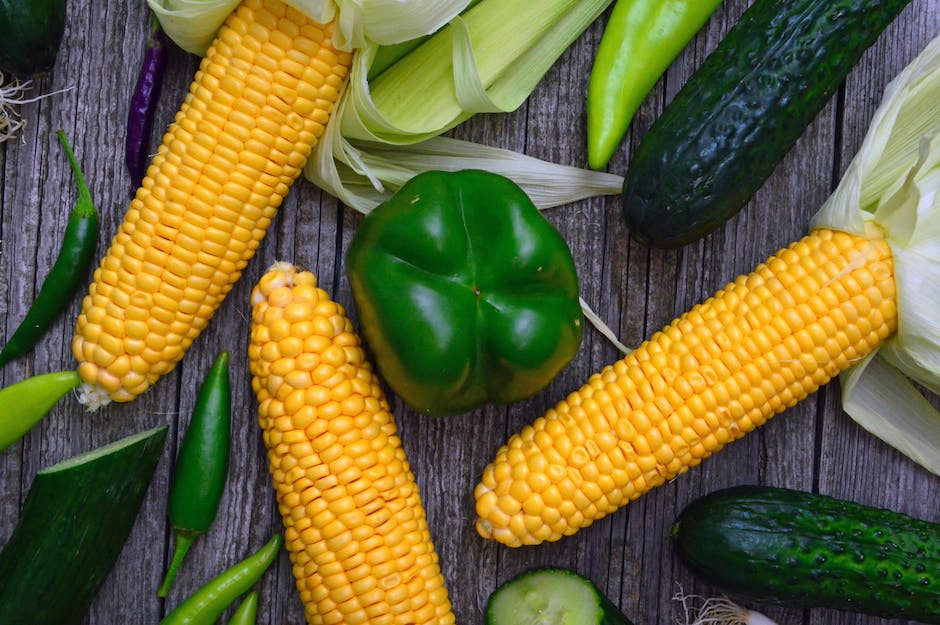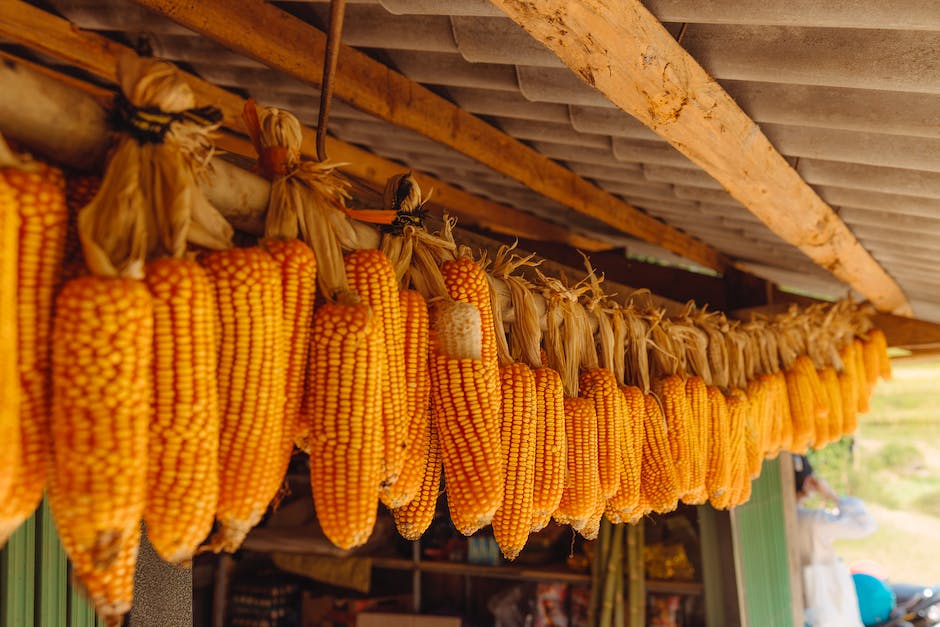Harvesting Tips: When is Corn Ready to Pick?

The feast and nourishment that corn offers us is a much-awaited event each year, and knowing precisely when to reap this golden prize is fundamental. Recognizing when corn is ready for harvest is not guesswork but rather a science, involving an keen understanding of the corn growth stages and signs of maturity. Whether you’re a backyard gardener or a large scale producer, your goal is to pick corn at its peak – when it’s sweet, juicy, and bursting with flavor. Consequently, we will delve into key topics such as: discerning corn growth stages, checking the corn husk and silks for tell-tale signs, and performing a kernel milk line test to perfect the timing of your harvest.
Understanding Corn Growth Stages
Title:
Cracking the Corn Code: Your Complete Guide to the Growth Stages and Harvesting Time IndicatorsFellow gardeners and agricultural enthusiasts, tighten your gloves and grab a cup of hot coffee; it’s time to delve deep into the fascinating world of corn growth stages! A cornfield’s rustling leaves often convey an aura of mystery, don’t they? But fear not, as this comprehensive guide reveals the enigmas of corn growth and clues that signal the ideal time for harvesting.
To embark on this journey, it’s crucial to understand that a corn plant’s lifecycle is divided into two primary phases: vegetative and reproductive. Each of these stages holds a trove of knowledge, offering us the keys to unlock the art of precise corn harvesting.
Stage 1: The Vegetative Phase
This stage commences as the seedling breaks through the ground, showcasing its first leaf. It’s often referred to as the V1 stage. Overall, the vegetative phase comprises eight stages, denoted as V1-V8. Each V-number represents a new leaf until it reaches V8, when all the leaf collar regions are visible. This phase witnesses rapid growth and the formation of basic plant structures. Keep an eye on the plant in this stage; any stress can hamper the plant’s yield potential.
Stage 2: The Transitional Phase
Ever noticed the tassel’s appearance at the top? This marks the transition of the corn plant from vegetative to the reproductive phase, denoted as the VT stage. If you’re keen on observing, you might spot this stage around three days before the tassel’s complete emergence and silking.
Stage 3: The Reproductive Phase
Hailed as the critical phase, it’s here where the actual game begins and our corn gears up to form kernels. It’s divided into five stages, starting from R1 (Silking) and traversing through R2 (Blister), R3 (Milk), R4 (Dough), and finally, reaching R5 (Dent). If you’re a vigilant observer, you’ll notice the transformation of fresh silk strands into maturing kernels in this phase.
Stage 4: The Maturity Phase
Bingo, the corn has finally reached the R6 or Physiological Maturity stage. It’s where our kernels have accumulated maximum dry matter, and the black layer is visible at the kernel’s base.
So, what’s the riddle to determining corn’s harvest time?
While most might jump the gun thinking mature corn equates ready to harvest corn, it’s not exactly accurate. The ideal moisture content for corn to be harvested ranges between 20-25%. However, at the maturity stage, the moisture content is over 30%! It’s crucial to let your corn field bask more in the sun and wind to attain the perfect dry down conditions for harvest.
Therefore, the secret sauce lies in the right balance between crop maturity and moisture content. The waiting game post maturity can indeed test our patience, but remember, the real magic happens when the ‘black layer’ turns your corn into ‘gold’!
Harvesting corn is not just an agricultural operation, but an art mastered through experience. By understanding the corn growth stages, scrutinizing their nuances, clocking their timing, we can surely transform ourselves from corn growers into corn whisperers! Trial and error might be our constant companions, but remember, each corn kernel holds a universe of learning within. Happy Farming!

Checking the Corn Husk and Silks
Roll up your sleeves, enthusiast corn growers! Let’s dive right into the nitty-gritty of discerning ripeness just by scrutinizing the corn husk and silks. This expertise not only helps to determine harvest time correctly, but it also adds depth to the fascinating journey of cultivating corn. So, let’s untangle this kernel of knowledge together!
The corn husk and silks aren’t mere fluff; they’re a goldmine of indicators about the crop’s ripeness. The condition of both reveals crucial insights that can empower every grower to make an accurate judgment about harvest time. So what screams, “I’m ready!” from every kernel of corn?
First, let’s talk husk. The husk acts as the first line of defense for the corn, protecting the ear within from pests, disease, and fluctuating weather conditions. As a corn plant moves through the maturity phase, the hue and texture of the husk will change. Formation of a vibrant green husk denotes healthy development, a signal that joyous harvest time is near. Gradually, as the corn ripens, the husk’s shades transition to a lighter color and dry out, starting from the top down until it turns a papery tan or light brown.
The feel of the husk also plays a vital role in determining corn’s ripeness. Immature corn will have a soft and thin husk while a ripe ear of corn will have a husk that is tougher, and more substantial to touch. Before you get started with the big day-Harvest day, make sure the husk gives off the rustling sound of dried leaves when touched. If it does, chances are the kernels within are jockeying for the spotlight!
Silks play an equally crucial role in indicating ripeness. These delicate threads capture pollen, facilitating fertilization and leading to kernel formation. Silks that are fresh and a glossy green suggest an ear of corn that is still immature. As the corn ripens, these silks dry out, turning from lush green to a brownish hue. When they’re completely dry and brown, they’ll often fall off the ear. This is a positive indication that the corn has reached the coveted ripeness level.
Using the condition of the corn husk and silks as a guide can save growers the hassle of guessing when it’s harvest time. Naturally, this isn’t the only method of determining ripeness but it is an important piece of the puzzle that, paired with other factors like grain moisture testing, maturity phase discerning, and intuitive experience, will lead to the ultimate reward – a bountiful harvest.
So take this newfound knowledge, corn enthusiasts, and turn it into your cultivated wisdom. As we thread through this intricate world of corn growing, may your hobby broaden its meaning and your harvests be fruitful!

Performing a Kernel Milk Line Test
Diving Now into the Realm of Kernel Milk Line Test!
One route to determining corn’s readiness for harvest that hasn’t been touched upon yet is the kernel milk line test. For the seasoned and novice corn growers alike, it’s crucial to understand the intricacy this method brings. It is a little bit technical, a smidgen scientific, but all parts exciting! Let’s unravel the mysteries of this essential corn harvest test.
First off, what is a Kernel Milk Line Test? Understanding this requires knowing about the corn kernel’s life cycle. Post-pollination, kernels go through a milk stage (R3) wherein they are filled with a milky substance. This substance is primarily composed of sugars. Gorgeous, right? Hang on, there’s more! As corn progresses into the dough stage (R4), the milk line, a demarcation line moving from the top ward the cob, emerges as the starchy part of the kernel starts solidifying. The kernel milk line test is performed in this dough stage. Sounds complicated? Nah, not when you appreciate its significance.
Now, why is this Test Important? Here’s the scoop – the position of the milk line has a direct relationship with the moisture level and dry matter of the corn kernel. It provides a visual guide to check if the kernel reached the desirable moisture content, usually around 30% – a key parameter for harvest. Just when you think you’ve heard the coolest part, there’s more. It also offers insights into grain yield and feed quality.
Here’s how to perform the Kernel Milk Line Test. You start by randomly selecting a couple of ears from your corn field. Take care to choose from different plants, including smaller and larger ears for a more accurate result. Once you picked your sample, break the ears in half. Spot the milk line by carefully inspecting the kernels. You’ll find it around 2/3 down from the crown toward the cob. A fully mature kernel will exhibit no visible milk line. Let’s reverberate that – kernel maturity equals no milk line!
Remember, embarking on the kernel milk line test should not be done haphazardly. It’s all about timing! In the ideal world, test when the majority of ears in the field have reached the dent stage (R5). The reason being, you aim to see kernels at the late dough stage, where the milk line is clearly defined. Avoid jumping the gun here! If some kernels still display a milky inner substance, it means you’re earlier in the trajectory. No stress! Just revisit in a few days.
The kernel milk line test is handy, cost-effective, and incredibly beneficial in gauging the perfect harvest time. It empowers growers and helps you attain every corn enthusiast’s ultimate goal – a bountiful, high-quality harvest! So, get out there and let the kernel milk line test work its charm on your corn field. Unravel its beauty and make it an integral part of your corn harvesting journey. Here’s to great corn harvests, each time, every time!

The art of knowing when corn is ready to be harvested involves much more than just a glance at the calendar. It requires a deep comprehension of the plant’s growth stages and a watchful eye on the corn’s husks and silks. Furthermore, the kernel milk line test can offer a conclusive sign to give you the assurance of picking it at the optimal time. With time and diligent practice, you can cultivate not only a corn plant, but also the wisdom of when it is in its best state to be harvested. Thus, the mouth-watering taste of harvested at its peak corn will be a bountiful reward for your attentive efforts.



